City Subsidy To Redevelop State’s Third Tallest Building Scores First Approval
DCD Commissioner says more deals are coming with city's new TIF guidelines.
A proposal to provide city financing to aid the $165 million redevelopment of Wisconsin’s third-tallest building received its first public approval Thursday.
The City of Milwaukee would provide $14.4 million, plus interest, from a new tax incremental financing (TIF) district, to support the conversion of the 100 East office tower into 373 apartments.
It would be the first deal approved under the city’s new TIF guidelines. And it’s proof, said Department of City Development Commissioner Lafayette Crump, that “[we] will do what it takes to grow the tax base.”
The 35-story, 435,537-square-foot building entered foreclosure in 2021.
“The building was 50% occupied when we bought [for $29 million in 2023] and there was a long list of tenants waiting for their lease to expire or someone to approach them so they could leave,” said developer Joe Klein to the board of the Redevelopment Authority of the City of Milwaukee (RACM).
There is now a single tenant left said Klein. Others, including Gruber Law Offices and Marcus Corp., have found new homes, often Downtown. The exodus from the building, and its planned conversion away from office use, will be a boon for the rest of the downtown office market said the developer.
Its redevelopment, with an expected future assessed value of $120 million, could also eventually be a boon for property taxpayers.
The structure was constructed in 1989 and had long been one of the city’s 10 most valuable properties, but its assessed value plunged alongside its occupancy rates as tenants sought modern spaces with better floor plans, more amenities and floor-to-ceiling windows. Due to Wisconsin’s property tax structure, the decline in the building’s value was likely to increase the average property taxpayer’s bill by $4 annually, an earlier analysis by Urban Milwaukee found.
But the redevelopment would again put the building among the city’s 10 most valuable and, once the subsidy is paid off in 16 years or less, reduce property tax bills.
In exchange for the subsidy, the development team would be required to lease 75 of the 373 apartments to households making at or below the area median income (approximately $77,000 for a single person) at a rate targeted at 30% of their household income. The lease restrictions would stay in place for the longer of 20 years or until the TIF district is closed (a maximum of 27 years). The max rent, adjusted annually to U.S. Housing and Urban Development (HUD) figures, would range from $1,937 for a studio and $2,878 for a three-bedroom apartment.
The rates, said Crump, would provide new housing for nurse practitioners, city workers, entry-level software developers and other early career positions. It would also provide housing for couples where each member has a middle-income job.
As part of the subsidy, the development team will also need to comply with city subsidy requirements, which include having 40% of the project’s work hours completed by unemployed or underemployed city residents through the Residents Preference Program and 25% of the project’s contracting costs performed by certified disadvantaged small businesses.
An additional warrant is also included in the term sheet. Since the building is transitioning from office to residential use, it will no longer be required to contribute to the business improvement district (BID) for the riverwalk or Milwaukee Downtown. But the city subsidy requires annual payments of $15,000 to the riverwalk BID and $65,000 to Milwaukee Downtown, both with 1% annual escalators, until the TID is closed.
The TIF subsidy is proposed as a developer-financed agreement, where the city only provides the funding incrementally based on an increase in the property’s assessed value over its current value. Effectively a property tax rebate, the structure transfers the risk to the development team. The repayment period would be for a maximum of 16 years with 6.2% annual interest added.
The development team consists of members of the Klein family and entrepreneur Johnny Vassallo. The partners previously partnered on MKE Lofts, located just across the Milwaukee River.
Tenants in 100 East would have access to a wide variety of amenities. The first floor is to include a fitness center and spa, while the 11th floor would be the primary amenity level with a club room and coworking space. The 331-space parking structure at the base of the building is slightly wider than the upper floors, creating an outdoor space on the 11th floor that would be used for a pool and deck.
The development team also owns the skywalk-connected parking structure, 718-722 N. Water St., and would make spaces available to tenants for a monthly charge.
The development team is pursuing a HUD loan guarantee for the project, similar to what The Couture relied on. The redevelopment would eclipse the 44-story The Couture as the tallest residential building in Wisconsin.
After some controversy in 2024, 100 East is now listed on the National Register of Historic Places. The designation will provide access to state and federal historic preservation tax credits, which are expected to cover $22 million of the project’s costs in exchange for making historically-sensitive alterations. The TIF agreement notes that those restrictions include maintaining the top two floors close to their current state, a law firm’s penthouse space.
Solomon Cordwell Buenz is leading the project’s design. A partnership of Oxeland Group and Stevens Construction would lead the construction. Work is to be completed by early 2028.
The RACM board unanimously approved the proposal.
The TIF district now heads to the Common Council for review.
What Other TIF Deals Will Emerge?
Much of the discussion on the proposed TIF centered on what other TIF deals could be coming forward and their structure.
Commissioner Montavius Jones said the TIF guidelines, issued in April, would result in developers seeking subsidies units at the 100% area median income level and not lower levels.
The city previously only offered TIF subsidies for “affordable housing” to developments that provide housing, often with low-income housing tax credits, to individuals making 60% or below of the Milwaukee County median income. But the new guidelines, reflecting a surge in construction and housing costs, raised the income cap to try to induce more development of non-luxury housing, known as “workforce housing.”
Jones said that because of the possibility of collecting more in rent, developers were incentivized to jump to the top of that scale, 100% of the area median income.
“I think that’s a fair concern, commissioner, and what I would say is ‘let’s assess the first few projects,'” responded Crump. “We are in conversation right now with a number of developers, and we have multiple deals that we are evaluating right now.” He said not all were at the 100% level. “If we do not see the results from this program that we would like to see, we will tweak it.”
100 East Renderings
100 East Photos
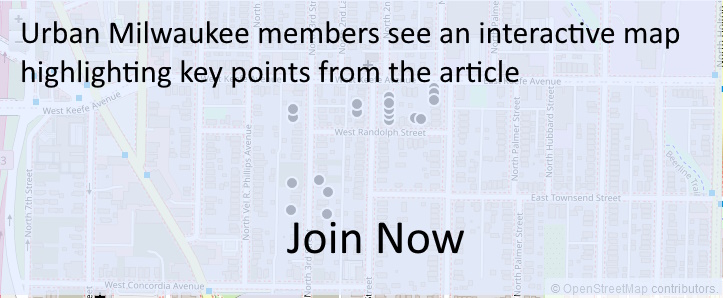
Existing members must be signed in to see the interactive map. Sign in.
If you think stories like this are important, become a member of Urban Milwaukee and help support real, independent journalism. Plus you get some cool added benefits.
More about the 100
- City Subsidy To Redevelop State’s Third Tallest Building Scores First Approval - Jeramey Jannene - Jul 17th, 2025
Read more about 100 here


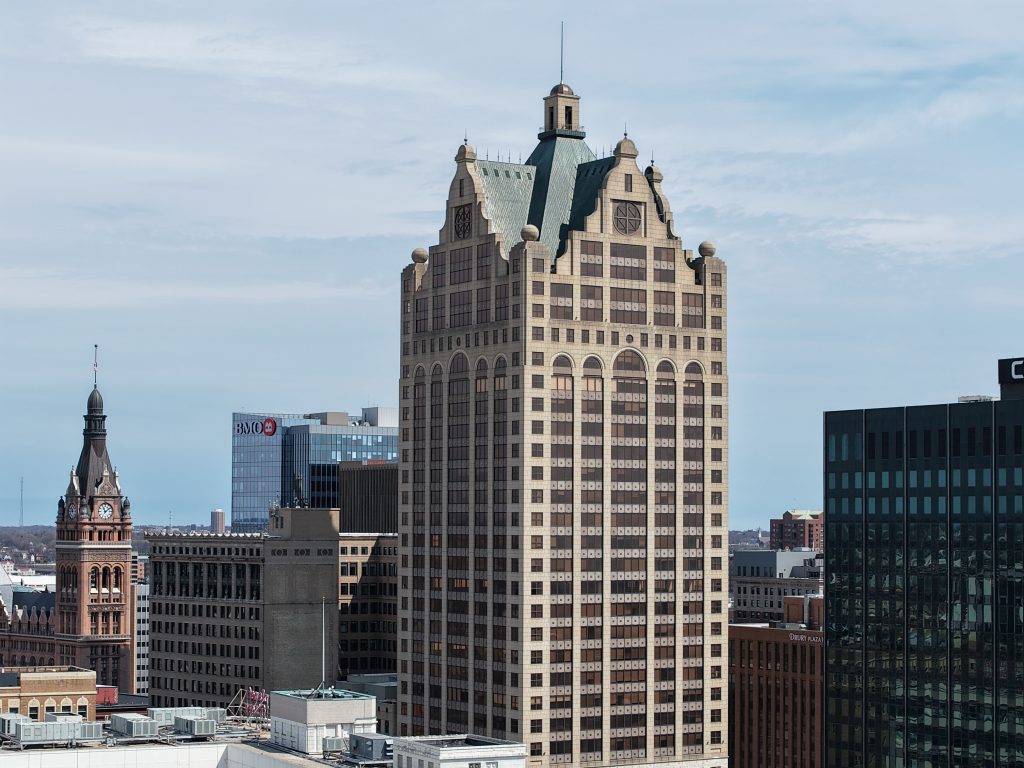

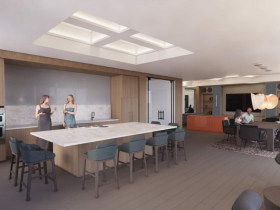
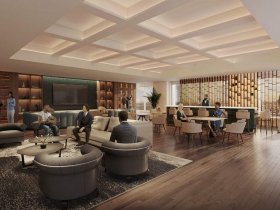


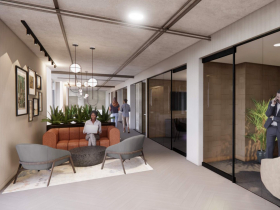
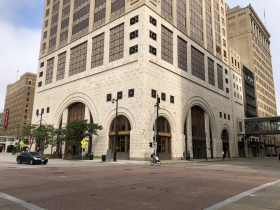
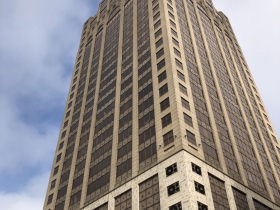
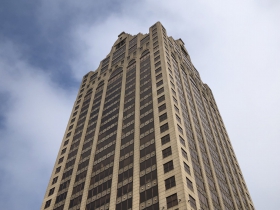



















My favorite rendering is #9, in which the man at the dog-washing station appears to be holding the shower nozzle up to his mouth while both the dog in the tub and a woman standing at the random counter in the back blithely stare at him.
What must they be thinking…?
He’s thinking: “If I can afford to pay this much in rent, why am I not paying someone to wash my dog for me?”